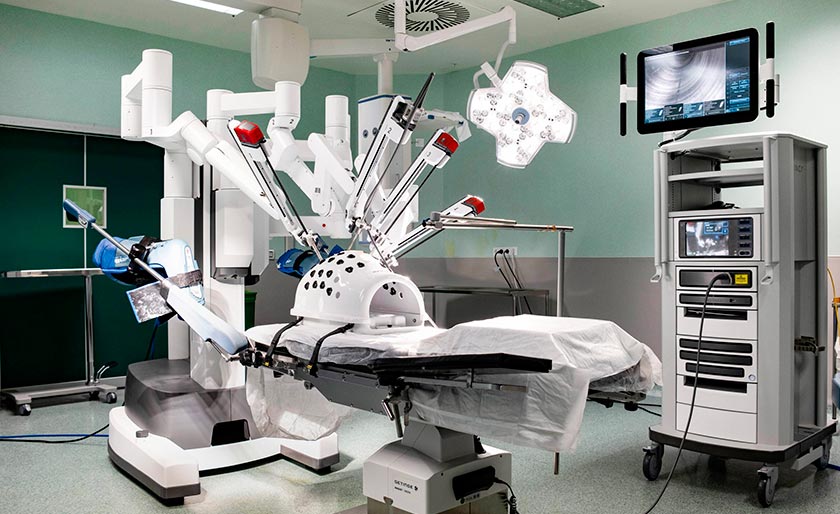Health and technology are increasingly merging
- March 29, 2024
- 0
When we think of a operating room Figures of medical professionals dressed in gowns and caps, medical instruments and sterile environments come to mind. However, in this space
When we think of a operating room Figures of medical professionals dressed in gowns and caps, medical instruments and sterile environments come to mind. However, in this space

When we think of a operating room Figures of medical professionals dressed in gowns and caps, medical instruments and sterile environments come to mind. However, in this space every day there are more technologies that coexist with professionals to make their daily lives much more accurate, agile and efficient.
In the Spanish public health system alone, more than 3.4 million operations are performed annually, according to data from the Ministry of Health. Almost 2 million must be added to them, which are developing in the private healthcare sector. Major or minor interventions, but they are always performed in the operating room.
In this place, hygienic conditions and personnel are necessary, as well as suitable tools to make the process fast, safe and as comfortable as possible to minimize accidents. Innovation in this environment led to the call smart operating rooms or hybrid operating rooms which allow to push this cooperation to the highest level from various technological associations.
Various technologies can be provided in these spaces. From screens to monitoring operations to patient control monitors or collaboration devices to communicate with external agents. In addition, the experience can be enriched with applications or wearable devices that monitor and complement the work of the staff. Of course, we haven’t forgotten about robotic equipment that combines human experience with technological intelligence to improve success.
We start with screens. Image is a fundamental aspect of operating theatres. Monitors designed for these scenarios must therefore, among other things, be able to reproduce colors as faithfully as possible, have high clarity and less image flicker. In particular, LG’s 4K technology represents a clear advance that offers superior image quality.
This also affects ergonomics integrated technology. Especially in long-term operations, they need to have equipment that can be moved or adapted to medical professionals. This reduces fatigue and even speeds up operation.

It is also among the most advanced operating rooms high precision robotics. So called hybrid operation or even fully robotic, they are not yet the standard, but they present us with the future where technology will move in this field. These robotic spaces also include high-precision cameras, mobile surgical tables or mechanical medical equipment.
The 3D printing It also found space in operating theaters to create prototypes tailored to the needs of patients. The Gregorio Marañón University Hospital in Madrid was one of the first to introduce this innovation, which complements the others, to create this hybrid operating room.
The communication is another key point. Operating theaters need collaboration solutions that allow internal and external communication to be established to coordinate interventions.
Just as important as process management is patient well-being and recovery. In this sense, technology also comes to the aid of applications that, for example, reduce anxiety in children in these surgical processes, use virtual reality or communication solutions that facilitate the relationship between medical staff and the patient.
However, technology has become the perfect ally of the operating room, but also of the entire medical center. Salvador Vera, CEO of MYSPHERA, confirmed this:
“More and more hospitals and health centers are moving to a new management model that incorporates technology and digitization to reduce their waiting times, improve the efficiency of their operating room spaces, and relieve their healthcare professionals of administrative burdens.”
So much so that many areas associated with operating rooms benefit from this technology. For example, the area of MRI or radiodiagnostic tests, which are usually ordered in advance for certain procedures. At this point, technology is constantly evolving to achieve higher image resolution and better management systems.
But that’s just the tip of the iceberg. The digitization of healthcare concerns the entire healthcare system and can benefit many areas, such as patient care, internal management of healthcare centers or multidisciplinary meetings themselves, among others.
Source: Muy Computer
Donald Salinas is an experienced automobile journalist and writer for Div Bracket. He brings his readers the latest news and developments from the world of automobiles, offering a unique and knowledgeable perspective on the latest trends and innovations in the automotive industry.